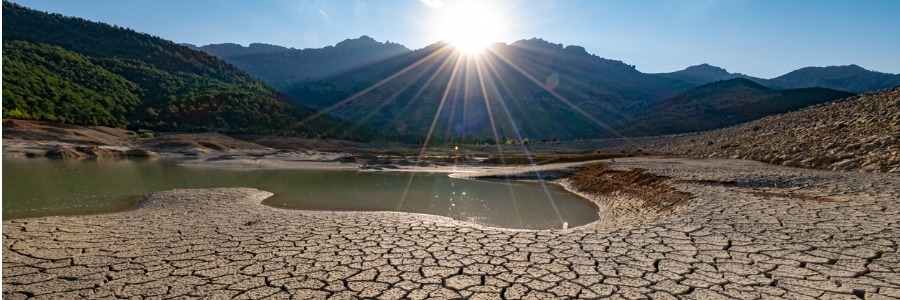
In times of drought, above ground sprinklers aren’t the most efficient way to irrigate a parched landscape. Much of the spraying water will be lost through evaporation before it even hits the ground. Even worse, copious amounts of water will puddle up and runoff a hard-baked ground surface before it can seep down to hydrate thirsty plant roots. Definitely a huge waste of water during drought times– or anytime. Which is why drip irrigation is ideal, as it’s applied directly to the base of plants to filter down through the soil and nourish roots.
Drip irrigation is suitable for most soils. For dense clays, it is applied slowly to avoid ponding on the hard-packed surface and running off. For sandy soils, drip irrigation is applied with higher emitter discharge rates to ensure sufficient lateral wetting of the soil.
Whether dense clay or sandy soil, they should be amended first before planting, as amended soils hold moisture best. Amended soils will also soak up rainwater, which otherwise would runoff a hard packed ground surface. Compost, peat moss, and even digging fallen leaves into the soil to compost, will provide better soil aeration and help retain soil moisture without being waterlogged.
Covering the soil with drought resistant ground cover such as sedum will also hold moisture, as does organic mulch, which breaks down slowly to enrich the soil. However, mulching around some drought tolerant plants such as cacti and succulents could rot their stems, since mulch holds so much moisture. It’s better to landscape with rocks, stones or pebbles around these dry-soil denizens.
Besides cactus– which stores water in its body, and succulents that conserve water in their thick, fleshy leaves—other drought resistant plants to consider for landscaping are:
- Blooming Santolina
- Lavender
- Dusty Miller
- Lamb’s Ears
Tall, splaying thatches of ornamental grasses make lovely focal points, especially grouped with decorative rocks. A few to consider in drought resistant landscaping are:
- Fountain Ornamental Grass
- Flame Grass
- Maiden Grass
- Sedge
The advantages of using drip irrigation to keep plants hydrated and healthy in times of drought are increased soil filtration capacity with no soil erosion, and reduced energy cost since it operates under lower pressure than other methods of irrigation.
Dripping water directly to the base of individual plants is most efficient when water is scarce. It’s smart irrigation that keeps a landscape thriving in times of drought. Reducing water use and waste even more, smart controllers irrigate only when necessary.


